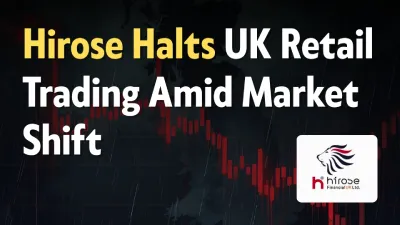One Financial Markets
Abstract:Stocks rose Friday as Wall Street wrapped up a volatile, but winning quarter that saw more Federal Reserve rate tightening and a mini-financial panic spurred on by the collapse of Silicon Valley Bank.

Stocks rose Friday as Wall Street wrapped up a volatile, but winning quarter that saw more Federal Reserve rate tightening and a mini-financial panic spurred on by the collapse of Silicon Valley Bank.
The Dow closed higher Friday, notching a monthly gain, led by growth stocks including tech as signs of cooling but still-elevated inflation pushed Treasury yields lower. The Dow Jones Industrial Average added 1.26%, or 415 points, to end the month up 1.9% but end the quarter just above flat. The Nasdaq gained 1.3% to end Q1 up nearly 20%. The S&P 500 rose 1.4%.
The core personal consumption expenditures price index, which excludes food and energy and is the Feds preferred inflation gauge, increased 0.3% in February just below the 0.4% expected.
A deeper dive into the data, meanwhile, showed the core services ex-rent component increased 0.27% in February, the “best since an out-of-the-blue dip in July last year,” Pantheon Macroeconomics said.
The U.S. 10-year Treasury yield fell five basis points to 3.51%, helping growth sectors of the market, though it is expected to remain range bound.
The 10-year TSY yield remains stuck in a broad trading range,“ Janney Montgomery Scott said. ”Continue to watch 3.30% as support on the 10-year; initial resistance remains at 3.60%, then closer to 4% in our view, it added.
Tesla (NASDAQ:TSLA) was the biggest gainer among consumer stocks, rising more than 6% followed by CarMax (NYSE:KMX) and Caesars Entertainment Corporation (NASDAQ:CZR).
Tech, which is on track for a 20% rise in Q1, was lifted by a rise in Alphabet (NASDAQ:GOOGL) and Apple (NASDAQ:AAPL), while semiconductor stocks also underpinned the broader move higher.
NVIDIA Corporation (NASDAQ:NVDA) rose more than 1% adding to the swashbuckling 89% gain seen in the quarter, with the chipmaker riding high on the coattails of a strong interest in generative AI that is expected to boost its chip demand.
On the earnings front, BlackBerry's (NYSE:BB) narrower than expected loss overshadowed revenue that missed Wall Street estimates, sending the share price more than 14% higher.
ELF Beauty (NYSE:ELF) jumped more than 4% after Morgan Stanley upgraded its price target on the cosmetic company to $94 from $75, citing favorable Q1 sales data.
In other news, Virgin Orbit Holdings Inc (NASDAQ:VORB) sank 41% as it announced it would be shutting down operations and cutting about 90% of staff after attempts to secure funding failed.
The relative underperformance in the Dow Jones Industrial Average for the quarter followed pressure from regional stocks following the collapse of SVB and Signature that led to a 25% drop in the banking sector.
Despite the broader market gains, some warn that equity valuations are still historically high at a time when bonds offer attractive returns.
With the market trading at 21 times earnings, which is “historically high, you would expect the scenario would be indicative to justify that kind of valuation but you don't have any of that,” Sean O'Hara, president of Pacer ETFs, told Investing.com's Yasin Ebrahim in an interview on Friday. “The Fed is non-accommodative, inflation is still a challenge, there is banking liquidity crisis, and a potential recession coming as well as earnings revisions to the downside.”
“But the biggest difference is that investors can park their money now in [Treasuries] and make 5% without any risk,” O'Hara added

Read more

Hirose Halts UK Retail Trading Amid Market Shift
Hirose Financial UK suspends retail forex services, citing a shift toward institutional trading despite strong revenue growth.

What Is a Good Spread in Forex? A Complete Guide
A good forex spread is typically under 1 pip on major pairs in liquid hours; learn definitions, benchmarks, costs, and how to pick low‑spread brokers.

Vietnam “Elites’ View” Event Highlights: Key Insights - Confidence, Discipline
In the current global financial environment full of uncertainty, Vietnamese investors urgently need answers: How to build confidence? How to find balance between risk and mindset? Which new tools can truly protect them? WikiFX launched the “Vietnam Elites’ View” event in its community, where 12 distinguished guests shared their in-depth insights from the perspectives of trading practice, education and training, investment research analysis, and platform operations.

WikiFX Golden Insight Award Unveils New Judging Panel
In recognition of the outstanding contributions made by forex professionals in fostering a robust industry ecosystem, WikiFX has launched the “Golden Insight Award” — uniting brokers, IBs, KOLs, service providers, and various industry professionals to jointly drive transparency, security, and sustainable development in the global forex industry.
WikiFX Broker
Latest News
Behind the Licences: Is Pepperstone Really Safe for Malaysians?
Promised Recession... So Where Is It?
Hirose Halts UK Retail Trading Amid Market Shift
FINRA Fines United Capital Markets $25,000
CONSOB Blocks EurotradeCFD’s Solve Smart, 4X News
Oanda: A Closer Look at Its Licenses
FCA Urges Firms To Report Online Financial Crime
IBKR Jumps on September DARTs, Equity Growth
Service Sector Surveys Show Slowdown In September Despite Rebound In Employment
Rate Calc

